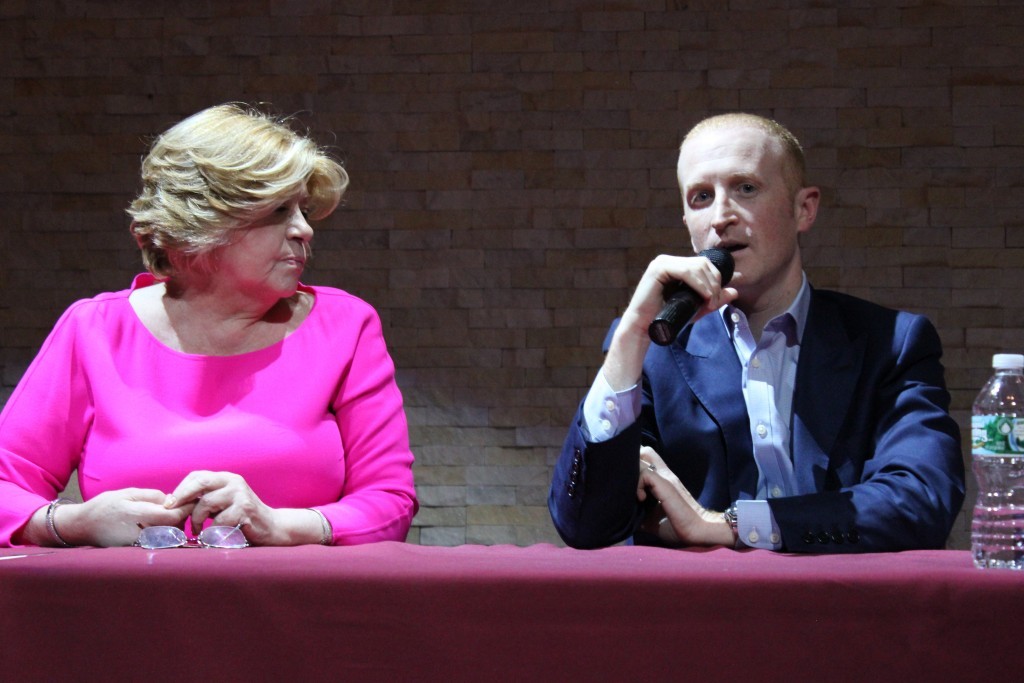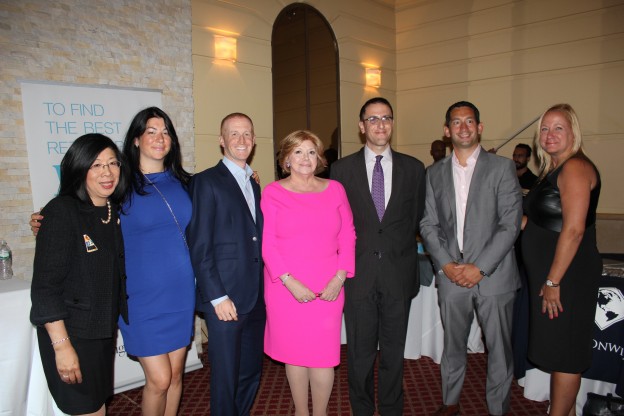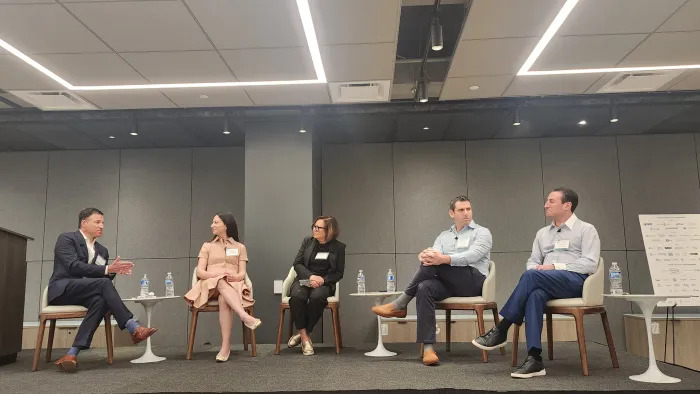The latest news and trends in the “World’s Borough” was the focus of a panel discussion, “From Food to Fashion: What’s Trending in Queens Real Estate” at the 2015 Real Estate Subway Series Queens held at the Renaissance Event Hall in Long Island City on Monday.
Schneps Communications co-publisher and LIC Flea and Food founder Joshua Schneps was joined at the panel by fellow panelists Margaret T. Ling Esq. of First Nationwide Title, RXR Realty executive vice president Seth Pinsky and Justin Cole, assistant vice president of leasing for Macerich. Faith Hope Consolo, world-renowned consultant and chair of The Retail Group with Douglas Elliman Real Estate, moderated the panel.
The panel discussed the ways in which cultural, social and economic trends in Queens have contributed to the boom in both retail and residential real estate throughout the borough.
According to the panelists, the thriving diversity in both culture and cuisine is one of Queens’ best qualities.
“I think the big difference between Queens and really any of the other four boroughs, but especially Brooklyn, is that Queens is a collection of communities,” Pinsky observed.
Schneps agreed: “We have over 18 different publications because we recognize that there are different demos in all of the different areas of Queens and Brooklyn and beyond.”
The LIC Flea and Food features more than 80 vendors representing roughly 85 different nationalities.
“It reflects the diversity and that people are looking for diversity, especially when it comes to cuisine,” Schneps explained. “Cuisine could be a big driving force and an attraction for tourism.”
“Food follows fashion,” Consolo said.
Many of the panelists observed that growth and trends throughout the borough were often driven by the tastes and preferences of a younger demographic, or “millennials,” flocking to Queens in search of affordability, cultural diversity and great public transit.
The panelists also noted that many of the changes happening in Queens’s commercial real estate are also due in part to a shift in the workforce. Pinsky believes that newer creative businesses ranging from tech start-ups to artisan goods producers are looking to establish outposts in Queens not only to be closer to the workforce here, but because they are seeking the unique architecture and character that Queens has to offer.

“This is an interesting time for Queens on the office front,” Pinsky said. “We’re increasingly seeing the establishment of creative enclaves along the Queens waterfront. You now have a workforce that’s very entrepreneurial and looking to work in the areas in which they also live.”
When asked to name some of the popular hot spots throughout the borough, Schneps said that both Long Island City and Astoria were at the forefront due to an abundance of diverse retail opportunities, eateries and a vibrant, growing population.
“If you go to 30th Avenue on a Friday night, it’s booming with a lot of outdoor cafes, mostly owned by young business owners in their 30s,” he explained. “I think a tremendous opportunity is Steinway Street in Astoria. Steinway Street is always known as the shopping street and the central part of Astoria. I think there is a huge opportunity here from a retail perspective.”
Schneps also observed that there was great opportunity for growth and expansion in Rockaway Beach as a result of the growing population of young artists and 20-somethings in the area.
“In terms of hot neighborhoods, I think there is a very long list of neighborhoods in Queens that are hot for all different reasons,” Pinsky said. “If you drive east from Flushing along Northern Boulevard, you will see how those neighborhoods heading all the way out to Little Neck have been completely transformed into Little Korea or Little China. There are phenomenal opportunities out there.”
The panel also grappled with the issue of the increased demand for affordable housing in Queens and beyond.
“The challenge that we’re facing as a city is a challenge of affordability,” Pinsky explained. “That challenge is coming from the fact that more people, companies and visitors want to be here than we’re able to accommodate. It’s a symptom of our success as a city, and not a failure.”
Pinsky believes that affordable housing efforts should be directed to the needs of the poor, who have often been displaced the by middle class after being priced out of their neighborhoods. He also argued that greater investments need to be made with regard to transit improvements, as middle class members tend to relocate along transit lines.



































